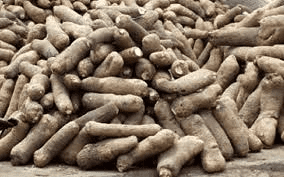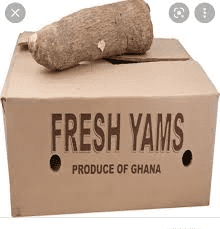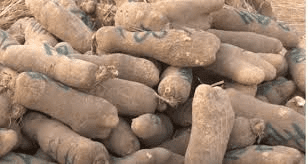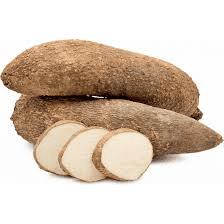Processing, packaging, and exporting yams can be a profitable business venture if done correctly. The steps involved ensure that the yams maintain their quality from farm to market, meeting the standards of international buyers and regulations. This guide will walk you through the essential steps to successfully process, package, and export yams, ensuring you maximize both quality and profitability.
Select quality yams that are healthy and firm, without signs of rot or damage, as high-quality yams ensure better export value. Clean the yams thoroughly by washing them under running water to remove dirt and debris, using a brush for stubborn soil.
Depending on the destination’s requirements, you may need to peel the yams using a sharp knife or a peeler. Cut the yams into uniform sizes if necessary to ensure even cooking and processing, which is crucial for consistency in quality.
Blanch the yams by boiling them briefly and then cooling them rapidly in ice water, as blanching helps preserve color, texture, and nutrients. Dry the yams completely to avoid moisture that could lead to spoilage during transit, using a clean cloth or air drying in a well-ventilated area.
Pack the yams in clean, dry containers suitable for export, avoiding overpacking to prevent bruising. Clearly label each container with information like origin, destination, and contents, as accurate labeling is crucial for customs and importers. Inspect all containers for any damage or defects and seal them properly to maintain freshness.
Finally, prepare the necessary export documentation, including phytosanitary certificates, invoices, and any other required documents.
Choose appropriate packaging materials such as high-quality, breathable materials like corrugated boxes or mesh bags to prevent spoilage and allow airflow. Line the containers with clean, dry paper or cloth to protect the yams from bruising and damage.
Arrange the yams neatly in a single layer if possible, avoiding stacking too high to prevent crushing. Include cushioning material like straw or shredded paper between layers to protect the yams during transit.
Seal the containers securely with strong tape or strapping to ensure they are secure and tamper-evident. Clearly label each package with essential information, including the destination address, product name, and handling instructions.
Ensure that the packaging meets the regulations and standards of the importing country, including any specific labeling or packaging requirements. Perform a final inspection of all packages for quality and packaging integrity before shipment, ensuring there are no signs of damage or contamination.
Keep records of the packaging process, including the number of packages and their contents, for tracking and compliance purposes. Store the packaged yams in a cool, dry place until they are ready to be shipped, avoiding exposure to direct sunlight or extreme temperatures.
Research and identify potential export markets, understanding the demand, pricing, and regulations in those markets. Familiarize yourself with the import regulations of the target country, including tariffs, phytosanitary requirements, and any other restrictions.
Build relationships with buyers or importers in your target markets, using networking and attending trade shows to find reliable partners. Determine your pricing strategy based on production costs, market rates, and competition, ensuring your prices are competitive yet profitable.
Negotiate clear terms with buyers, including payment terms, delivery schedules, and quality standards, and draft formal contracts to protect both parties. Organize transportation and logistics for shipping yams, choosing reliable shipping partners to ensure timely delivery.
Prepare and submit all required export documentation accurately, including customs declarations, certificates of origin, and other necessary paperwork. Monitor the shipment to ensure it arrives on time and in good condition, addressing any issues promptly to maintain customer satisfaction.
Follow up with buyers after delivery to confirm receipt and gather feedback, helping to build long-term relationships and secure repeat business. Regularly review your export process, analyzing sales data, customer feedback, and market trends to make necessary adjustments for continuous improvement.
How to Process Yams for Exportation

1. Select Quality Yams: Choose healthy, firm yams without signs of rot or damage. High-quality yams ensure better export value.
2. Clean Yams Thoroughly: Wash yams under running water to remove dirt and debris. Use a brush for stubborn soil to ensure they are clean.
3. Peel Yams (If Necessary): Depending on the destination’s requirements, you may need to peel yams. Use a sharp knife or a peeler to remove the skin.
4. Cut into Uniform Sizes: If required, cut yams into uniform sizes to ensure even cooking and processing. This step is crucial for consistency in quality.
5. Blanch Yams: Boil yams briefly and then cool them rapidly in ice water. Blanching helps preserve color, texture, and nutrients.
6. Dry Yams Properly: Dry yams completely to avoid moisture that could lead to spoilage during transit. Use a clean cloth or air dry in a well-ventilated area.
7. Pack in Containers: Place yams in clean, dry containers suitable for export. Avoid overpacking to prevent bruising.
8. Label Containers: Clearly label each container with information like origin, destination, and contents. Accurate labeling is crucial for customs and importers.
9. Inspect and Seal: Check all containers for any damage or defects and seal them properly to maintain freshness.
10. Prepare Export Documentation: Complete all necessary export paperwork, including phytosanitary certificates, invoices, and any other required documents.
Read Also: Sheep and Goat Housing Complete Guide
How to Package Yams for Exportation

1. Choose Appropriate Packaging Material: Use high-quality, breathable materials like corrugated boxes or mesh bags to prevent spoilage and allow airflow.
2. Line Packaging Containers: Line the containers with clean, dry paper or cloth to protect yams from bruising and damage.
3. Arrange Yams Neatly: Place yams in containers in a single layer, if possible. Avoid stacking too high to prevent crushing.
4. Add Cushioning Material: Include cushioning material like straw or shredded paper between layers to protect yams during transit.
5. Seal Containers Securely: Use strong tape or strapping to seal the containers tightly, ensuring they are secure and tamper-evident.
6. Mark Packages Clearly: Label each package with essential information including destination address, product name, and handling instructions.
7. Check for Compliance: Ensure that packaging meets the regulations and standards of the importing country. This may include specific labeling or packaging requirements.
8. Perform Final Inspection: Review all packages for quality and packaging integrity before shipment. Ensure there are no signs of damage or contamination.
9. Document Packaging Details: Keep records of the packaging process, including the number of packages and their contents, for tracking and compliance purposes.
10. Store Packages Properly: Store packaged yams in a cool, dry place until they are ready to be shipped. Avoid exposing them to direct sunlight or extreme temperatures.
How to Export Yams for Profits
1. Research Export Markets: Identify and research potential markets for yams. Understand demand, pricing, and regulations in those markets.
2. Understand Import Regulations: Familiarize yourself with the import regulations of the target country. This includes tariffs, phytosanitary requirements, and any other restrictions.
3. Establish Relationships with Buyers: Build relationships with buyers or importers in your target markets. Networking and attending trade shows can help you find reliable partners.
4. Set Competitive Prices: Determine your pricing strategy based on production costs, market rates, and competition. Ensure your prices are competitive yet profitable.
5. Negotiate Contracts: Negotiate clear terms with buyers, including payment terms, delivery schedules, and quality standards. Draft formal contracts to protect both parties.
6. Arrange for Transport and Logistics: Organize transportation and logistics for shipping yams. Choose reliable shipping partners and ensure timely delivery.
7. Handle Export Documentation: Prepare and submit all required export documentation accurately. This includes customs declarations, certificates of origin, and other necessary paperwork.
8. Monitor Shipment: Track the shipment to ensure it arrives on time and in good condition. Address any issues promptly to maintain customer satisfaction.
9. Follow Up with Buyers: Contact buyers after delivery to confirm receipt and gather feedback. This helps build long-term relationships and can lead to repeat business.
10. Evaluate and Adjust: Review your export process regularly. Analyze sales data, customer feedback, and market trends to make improvements and maximize profits.
Read Also: Guide On How To Increase Goats Milk
Frequently Asked Questions (FAQs) About Yams

1. What are the different types of yams available for export? There are several types of yams, including white yams, yellow yams, and water yams. Each type varies in flavor, texture, and use.
2. How long can yams be stored before export? Yams can typically be stored for several months if kept in a cool, dry place. However, for best quality, export them as soon as possible.
3. What are the common pests and diseases affecting yams? Common pests include yam beetles and nematodes, while diseases include yam mosaic virus and tuber rot. Proper handling and storage can help prevent these issues.
4. Do yams require any special treatment before export? Yes, yams may need to be washed, peeled, and blanched before export. Treatment depends on the requirements of the destination country.
5. What is the best time of year to export yams? The best time for exporting yams depends on the harvest season in the country of origin and market demand. Typically, yams are harvested from late summer to fall.
6. How can I ensure yams remain fresh during transit? Use proper packaging materials, avoid overpacking, and ensure containers are sealed well. Monitoring and controlling temperature and humidity also help.
7. Are there any specific certifications required for exporting yams? Exporting yams may require certifications such as phytosanitary certificates to prove they are free from pests and diseases. Check with the importing country for specific requirements.
8. How can I find buyers for my exported yams? Find buyers through trade shows, online marketplaces, industry contacts, and export promotion agencies. Networking and marketing are key.
9. What are common challenges in exporting yams? Common challenges include maintaining quality during transport, adhering to regulations, and dealing with market competition. Addressing these proactively can mitigate issues.
10. How can I improve my profitability in yam exportation? Improve profitability by understanding market demand, optimizing pricing, reducing costs, and maintaining high quality. Regularly evaluate and adjust your strategies based on market feedback.
Read Also: Hydroponics Guide 101: All You Need to Know About it


Dear Sir/Madam
I am from Papua New Guinea and am interested to export yams to Australia. Please kindly provide me some insights on how to go about.
Hello sir, we are glad that you find our article very helpful.
Please feel free to go through our article on How to Process, Package, and Export Yams by clicking on this link: https://agric4profits.com/how-to-process-package-and-export-yams/
Alternatively, you can also purchase our eBook, The Complete Practical Guide on Yam Flour Processing, by clicking on this link: https://agric4profits.com/product/complete-practical-guide-on-yam-flour-processing/
Feel free to ask us direct questions if you need any further assistance, and we will be here to attend to them all.